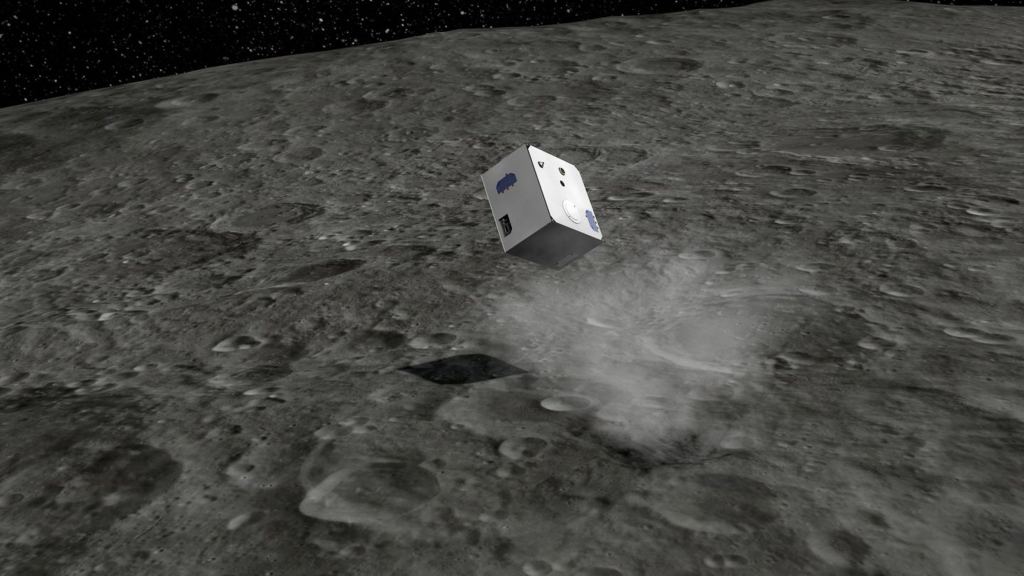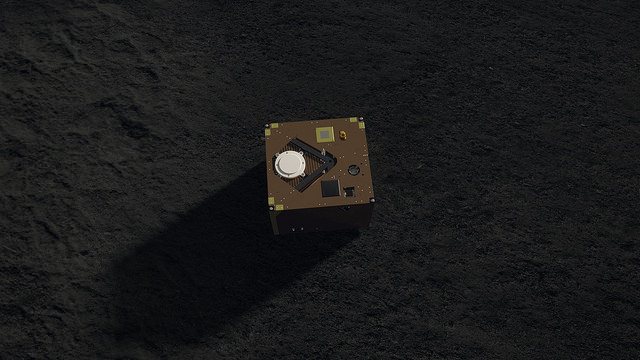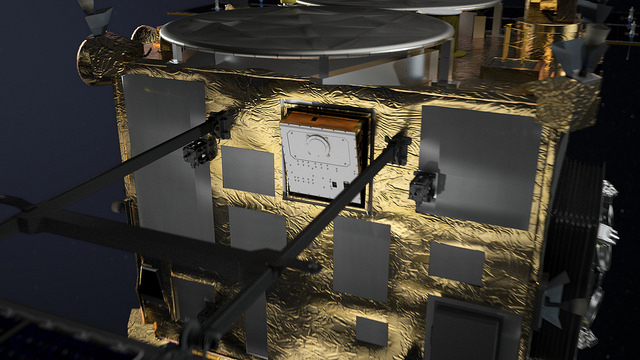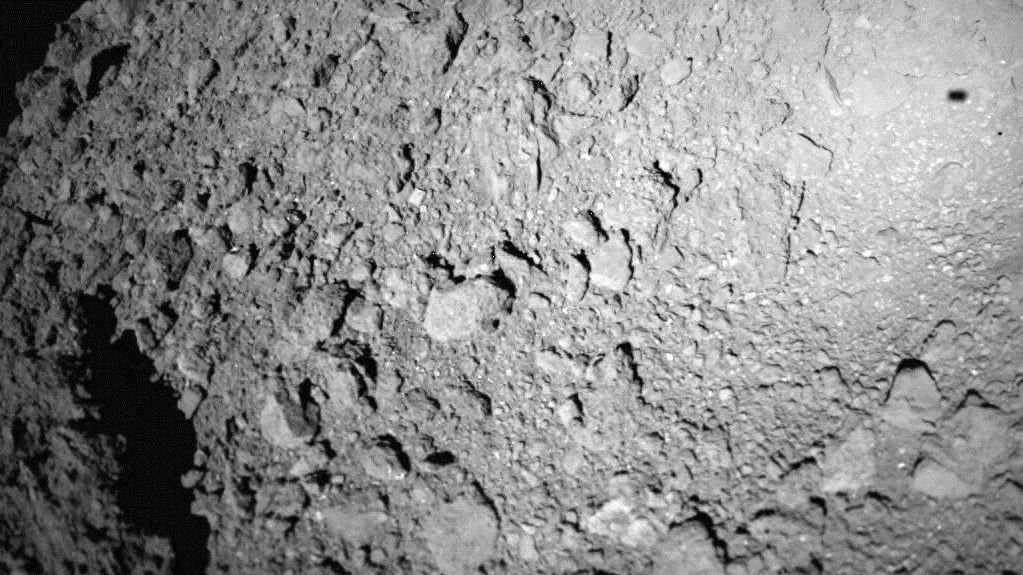Earlier this week asteroid Ryugu had a visitor. The Mobile Asteroid Surface Scout (MASCOT) landed on Ryugu on October 3rd after it was successfully deployed from the Japanese Hayabusa2 space probe. The little hopping robot’s visit was brief however, and it stopped functioning on Oct. 4th.
MASCOT’s mission was successful. It was designed to be short-lived. The lithium-ion battery was expected to last about 16 hours, and it lasted a little longer than that. It took readings at its landing location with the four instruments in its payload, and then it used its swing-arm to hop to another location to gather another set of data.
Check this out! I took this picture when I was almost on #Ryugu's surface. Look at how sunlight is reflected off me. What a dark surface!
Credit: MASCOT/@DLR_en /@JAXA_en #AsteroidLanding pic.twitter.com/fqM8Jr0WCm— MASCOT Lander (@MASCOT2018) October 5, 2018
“It could not have gone better.” – Tra-Mi Ho, DLR Institute of Space Systems.
There were some tense moments in MASCOT’s brief mission. As its mother ship, Hayabusa2, descended towards Ryugu, MASCOT was deployed at about 51m above the asteroid’s surface. It fell freely toward the surface at about the same speed as a pedestrian walking pace, and reached the surface after about 20 minutes. Landings like this are always difficult points in a mission, even at this slow rate of descent.

But the landing went smoothly, and the team monitoring the mission was relieved. “It could not have gone better,” explained MASCOT project manager Tra-Mi Ho from the DLR Institute of Space Systems. “From the lander’s telemetry, we were able to see that it separated from the mothercraft, and made contact with the asteroid surface approximately 20 minutes later.”
The camera was switched on during the descent and snapped 20 pictures on the way down. “The camera worked perfectly,” says Ralf Jaumann, DLR planetary scientist and scientific director of the camera instrument. “The team’s first images of the camera are therefore safe.”
Once on the surface, MASCOT got to work. The little hopping robot has four instruments on board: a camera, a spectrometer, a magnetometer and a radiometer. Each of the four worked properly and transmitted the data back to Hayabusa2. From there, the data will be sent back to Earth.

MASCOT travels by hopping because that suits its destination best. Ryugu is small; only 1km in diameter. If MASCOT had wheels, it would have immediately been propelled from the surface of the asteroid when it activated them. There’s not enough gravity to keep it there.
Asteroid missions are important because of the nature of asteroids. They’re some of the oldest objects in the Solar System, so they hold clues to the formation of the Solar System itself. “With MASCOT, we have the unique opportunity to study the Solar System’s most primordial material directly on an asteroid,” emphasises DLR planetary researcher Ralf Jaumann. With the data acquired by MASCOT and the samples that Hayabusa2 brings to Earth from Ryugu in 2020, scientists will not only learn more about asteroids, but more about the formation of the Solar System. “Asteroids are very primordial celestial bodies.”

The Hayabusa2 mission is a scientific mission. But asteroids are objects of interest for other reasons, too. They’re chock full of metals. According to Asteroid Resources, which hosts a website with estimated asteroid values, Ryugu is worth approximately US $82 billion. According to chemical analysis, it’s rich in nickel, iron, and cobalt.
Hayabusa2 previously released two other rovers onto Ryugu. They were also little hopping robots, named MINERVA-II1A and MINERVA-II1B. Another optional robot is still onboard Hayabusa2, ready to be deployed.
Next year, Hayabusa2 itself will venture down onto the surface of Ryugu. This is the culmination of the Hayabusa2 mission, which at its heart is a sample-return mission. The spacecraft will take three separate samples that should be delivered to Earth in 2020.
Sources:
- DLR Press Release: “MASCOT lands safely on asteroid Ryugu“
- DLR MASCOT Flickr
- Wikipedia Entry: 162173 Ryugu
- Asterank.com
- JAXA Hayabusa2 website

